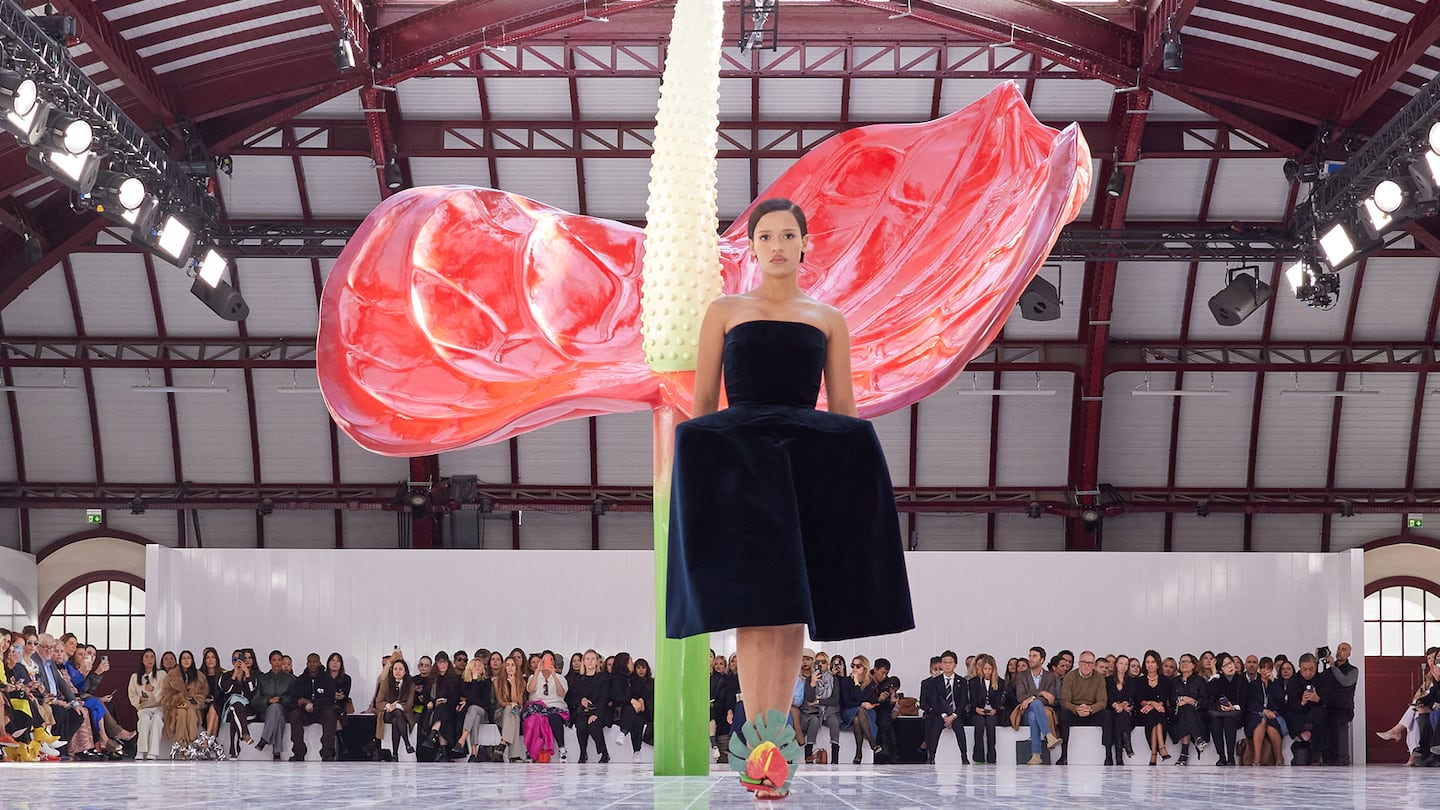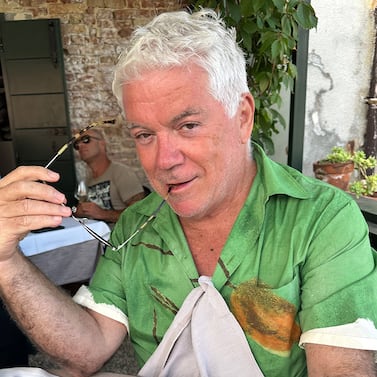
The Business of Fashion
Agenda-setting intelligence, analysis and advice for the global fashion community.

Agenda-setting intelligence, analysis and advice for the global fashion community.

PARIS – A giant anthurium rose invasively through the pristine white wooden floor of the Loewe show space. The flower is one of the most lascivious-looking in all of nature. Jonathan Anderson agreed. “It represents two things … or three, if it’s vibrating.” Weird sex was somewhere in the back of his mind. (It often is.) “Twisted,” was his summation. (It often is.) And yet there was an essential naivete in his presentation. Anderson’s girlish models radiated innocence, even as carnal anthuriums were draped over their bodies. “There is always something uncomfortable for me in the look, something slightly knife-edge,” he said. Though he insisted he was trying to find a balance, I could feel women in the audience shifting uncomfortably as young models walked past in the merest suggestion of a dress.
But this is why a Jonathan Anderson show lingers in the mind long after the last look has left the catwalk. What the hell was that, we wonder? He could say Barbie, I could say Alice in Wonderland, with proportions that stretched and shrank. He could say reality, and point to that giant anthurium, and I could say you couldn’t wish for a more artificial flower on the face of the planet. Then he would say nature’s a trickster. So is Jonathan Anderson.
0 of 53
Surrealism was still the uninvited guest at the wedding. A baby’s carseat as a tabard? Not quite Duchamp’s urinal but still a big challenge to orthodoxy. Last time, Anderson made a point of balloons in his accessories. Here, they were deflated, but there were many more of them, clusters of them covering shoes like petals or shells. But he also showed barely-there slip-ons of plastic. No place to hide in footwear like that. Or in the tiny flared dresses that accompanied them. Anderson’s creative impulse seemed to be towards reduction, as it was in the collection he showed for his own label in London ten days ago, though reduction for him doesn’t meant diminishment in any way. The silhouettes were perversely strong. He said he wanted “clarity and precision.” And making silhouettes is one thing he insisted he’s really enjoying. They were repeated over and over for emphasis. “Because repetition means you can hone the idea and ultimately get it right.”
Taylor Russell opened the show. She and Timothée Chalamet are soon to send the world sideways as cool cannibals in Luca Guadagnino’s Bodies and All. Afterwards, Anderson said she was “ultimately about the future of performance.” I wonder whether he sometimes wonders whether he might ultimately be the future of fashion in this crazy, mixed-up world.
There are profound lessons for fashion designers around the world embedded in the life and work of the Japanese innovator, whose death was announced this week, writes Angelo Flaccavento.
In a rare interview, the influential Japanese designer speaks with BoF’s Imran Amed about the philosophy that underpins his boundary-breaking career.
Rough-edged charm made for an oddly irresistible collection from Jonathan Anderson.

Tim Blanks is Editor-at-Large at The Business of Fashion. He is based in London and covers designers, fashion weeks and fashion’s creative class.
From where aspirational customers are spending to Kering’s challenges and Richemont’s fashion revival, BoF’s editor-in-chief shares key takeaways from conversations with industry insiders in London, Milan and Paris.
BoF editor-at-large Tim Blanks and Imran Amed, BoF founder and editor-in-chief, look back at the key moments of fashion month, from Seán McGirr’s debut at Alexander McQueen to Chemena Kamali’s first collection for Chloé.
Anthony Vaccarello staged a surprise show to launch a collection of gorgeously languid men’s tailoring, writes Tim Blanks.
BoF’s editors pick the best shows of the Autumn/Winter 2024 season.